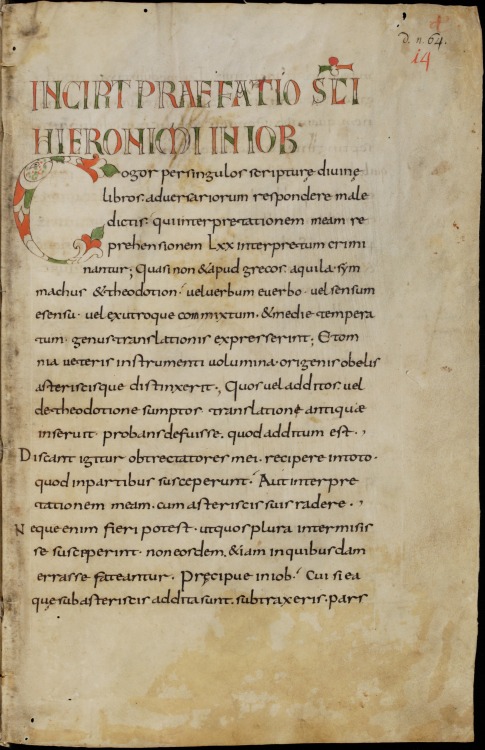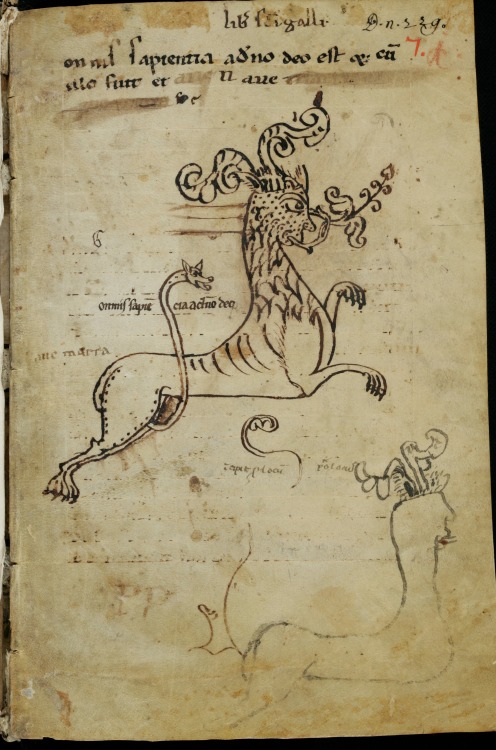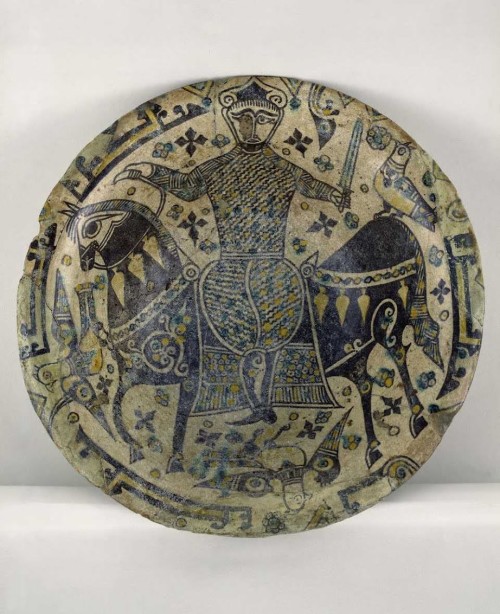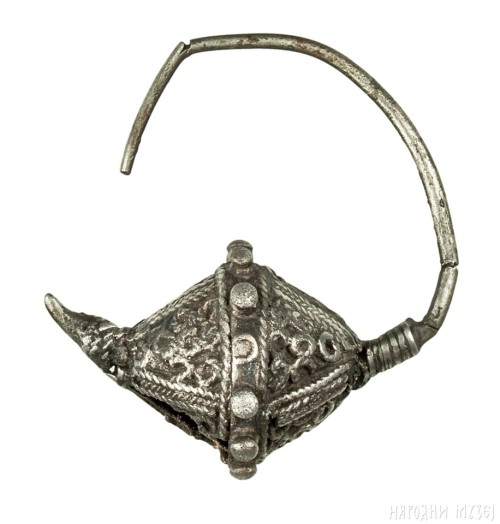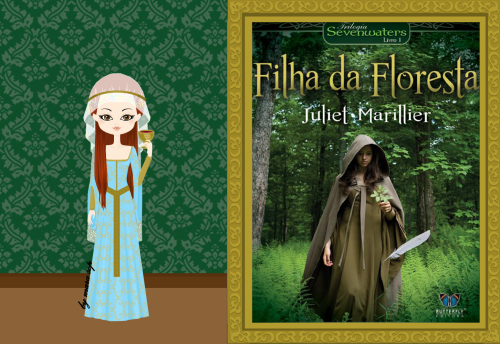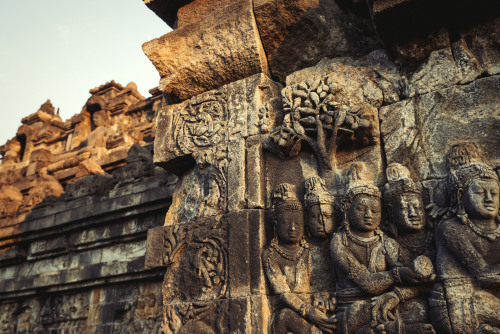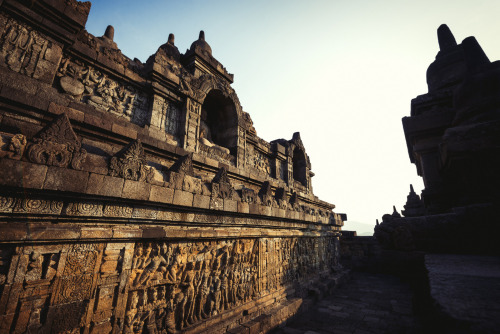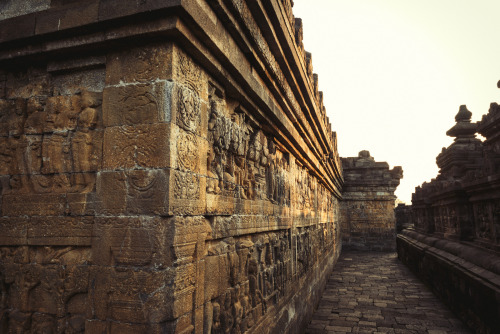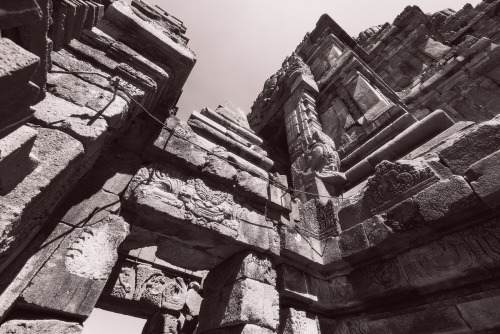#9th century


~ Figure of a Standing Warrior.
Culture: Maya
Place of origin: Yucatán, Península de
Date: A.D. 650–800
Medium: Ceramic with pigment
Åsa Haraldsdatter, Queen of Agder (Early 9thcentury)
Daughter of King Harald Granraude of Agder, Åsa is a semi-legendary figure in Norwegian history.
King Gudrød Veidekonge of Borre proposed marriage to her after the death of his first wife, Alvhild Alfarinsdatter, but King Harald refused the marriage. King Gudrød did not take the refusal in a good way, so he killed King Harald and his son. With both her father and brother dead, Åsa was abducted by King Gudrød and was forced to marry him.
She quickly fell pregnant; about a year after her marriage she became the mother of Halfdan the Black. Åsa did not wait long to get her revenge, during the year her son was one year old she ordered her servant to kill King Gudrød.
She left the kingdom of Borre to her stepson Olaf Gudrødsson, and took her own son with her back to the kingdom of Agder, where she took power.
Åsa ruled Agder as Queen Regnant for about two decades, after this she left the throne to her son, Halvdan.Trivia
- Her grandon was Harald Hårfagre (Harald Fairhair), the king who would unite Norway into one kingdom
- There’s a theory that queen Åsa was the woman buried with the famous Oseberg ship from 834, but this has not been confirmed
Post link
On my continuing trip through the St Gall archives, I come next to MS 14.
The manuscript contains five books from the Old Testament (Job, Tobit, Judith and 1 and 2 Ezra). It contains notations in the hand of Notker the Stammerer, the biographer of Charlemagne. It dates to the 2nd half of the 9th century.
As an illuminated manuscript, it’s about as minor as it gets; it makes the list because of exactly an interesting initial on page 1, and it’s a pretty minor initial at that.
It’s a zoomorphic initial, a fish shaped into a letter “C” with vegetal ends. “Fish letters” were a pretty common Merovingian motif, and lasted well into the Carolingian period. This is a pretty typical example. The titles are hollow capitals, filled with green and red. There are a few other hollow capital initials, filled with red through the manuscript, and that’s about it for this manuscript. Perhaps useful, in a minor way as a model.
Post link
This is something new. I’ve had this back burner project for a year of so I call 10,000 manuscripts. Basically it was an attempt to gather together a record of all of the “important” illuminated manuscripts. The number 10,000 is probably too small, especially as my sense of what is “significant” has expanded since I conceived the project. I’m now, in addition to the “important” manuscripts, also interested in finding models for my own (at this point theoretical) attempts at illumination, which often means much less well know manuscripts. Now the project should probably be something more like “100,000 manuscripts”, but I’m not going to live that long. I’m especially not going to live long enough as long as it is a back burner project, so I need to movie it up. Although I can’t devote my life to it, I am going to move it up to a middle burner, at least.
As part of the project I’ve been browsing through the thousands of manuscripts various libraries around the world have made online facsimiles of, looking for interesting manuscripts. Right now I’m looking at the library at the monastery of St Gall. They have 580 full manuscripts online, and the number is ever growing. They started in 2005 and have been adding ever since. Their latest batch was put up last month.
So let’s look at some of the things I’ve found:
First up is the Small Hartmut Bible (Cod. Sang. 7). Hartmut was the vice-abbot of St Gall in the middle of the 9th century. I’m assuming that there’s a “Big Hartmut Bible” out there as well. The Small Hartmut Bible contains the books of Proverbs, Ecclesiastes, Song of Solomon, Wisdom, and Ecclesiasticus.
The text is in a variant of Carolingian minuscule, and is written in a single column of 25 lines. Titles are in uncials, and the capitals are in red. There is not enough original decoration to warrant notice, but there are two later additions that I find interesting.
The first is a beast, added probably in the 9th or tenth century. Obviously someone doodling, or testing a new pen. The beast is described as a “Rising lion with vegetal ram horns, lion’s paws, and tail between his legs, with the end of dog head. From the mouth a branch grows. The inscription is "omnis sapientia a dno. Deo est et cum illo fuit et ii ave” I like this beast and can seeing using it as a model sometime in my own illumination.
The second addition is a portrait of Hartmut, who sponsored the book, added later, perhaps in the 12th Century. I like this because I can use it as a model for initial line drawing of a human figure.
As a bonus the book has one very nice initial. By itself, it would not have been enough for me to include it, as there is no way I can include every manuscript with a pen work initial, but I’m glad to have it as a model nonetheless
Post link
Augsburg, Universitätsbibliothek, Cod. I.2.4° 1, Sacramentarium Gregorianum Hadrianum, folio 1r. Lorsch, middle or second half of the 9th century.
Post link
St. Gallen, Stiftsbibliothek, Cod. Sang. 23, p. 68 on Flickr.
Manuscript title: Folchart Psalter (Psalterium Gallicanum with Cantica)
Manuscript summary: The Folchart Psalter, a masterpiece of late Carolingian illumination.
Origin: St. Gall (Switzerland)
Period: 9th century
Image source: St. Gallen, Stiftsbibliothek, Cod. Sang. 23: Folchart Psalter (Psalterium Gallicanum with Cantica)
(www.e-codices.unifr.ch/en/list/one/csg/0023)
Post link
St. Gallen, Stiftsbibliothek, Cod. Sang. 23, p. 49 on Flickr.
Manuscript title: Folchart Psalter (Psalterium Gallicanum with Cantica)
Manuscript summary: The Folchart Psalter, a masterpiece of late Carolingian illumination.
Origin: St. Gall (Switzerland)
Period: 9th century
Image source: St. Gallen, Stiftsbibliothek, Cod. Sang. 23: Folchart Psalter (Psalterium Gallicanum with Cantica)
(www.e-codices.unifr.ch/en/list/one/csg/0023)
Post link
Dish with Rider, Samanid Empire, Nishapur, Iran, 9th or 10th century, Ceramic; Earthenware, underglaze painted, w60 x h22 cm, Pergamon museum, Berlin, Germany.
High-heeled shoes were first worn by Persian soldiers in the 10th century. This art piece is an early example of it.
a short article about the history of men in Heels can be found here.
Post link
Santa Prassede / Basilica of Saint Praxedes, Rome, Italy, early 9th century
7th-9th century earrings form Serbia (found near Veliko Gradiste and Macvanska Mitrovica). They were most likely ordered and made in famous Byzantine gold centers.
Serbia has a very rich medieval history, but its people need help in the present day.
If you want to help out at least reblog this, if you are unable to donate. We had a very low media coverage. The damage is incalculable and we will feel the effects of this for years to come. Spreading the word is essential.
Thank you!
Post link

My Fairy Tale’s Weaver Girl
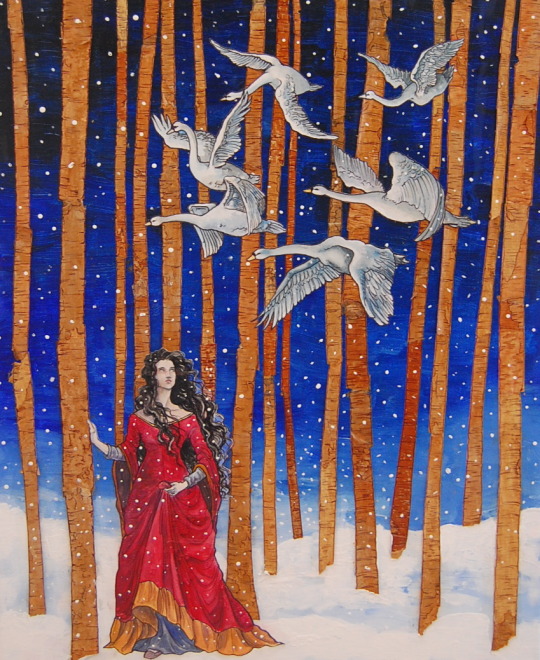
Sorcha of Sevenwaters (or Jenny of Harrowfield) from the book Daughter of the Forest (Juliet Marillier) is a young irish girl living with the bretons when she weaves the startwort shirts to break the spell that transformed her six brothers into swans (the book is inspired on the fairy tale of “The Six Swans” amazingly mixed with Irish legends).
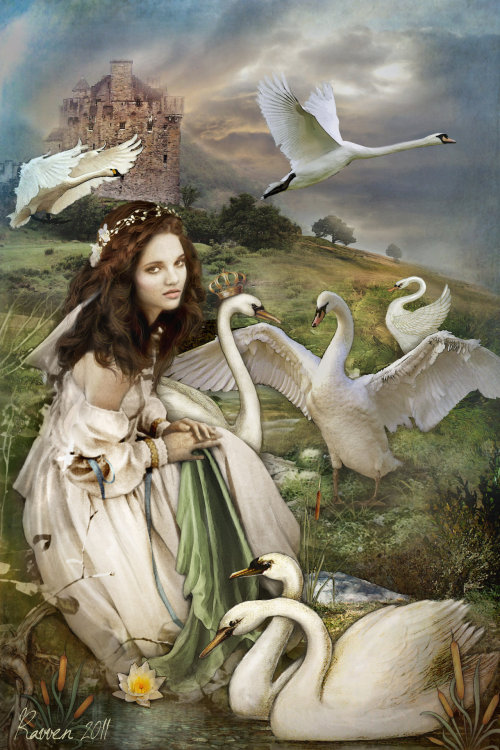
The startwort plants and flowers that she used to spin the magical shirtshad thorns that hurt and disfigured her hands.

I won this book as birthday gift from a dearest friend, and now I’m dying toread the whole series.

As the romance takes place in the beggining of King Aethelwulf of Wessex reign, I believe the approximate date is circa of 840.
by mara sop

Post link

My Sorceress Girl
I just finished my Lady Oonagh (from Sevenwaters Trilogy by Juliet Marillier), and I’m very happy with the result!

Lady Oonagh is the powerful sorceress from Sevenwaters Trilogy by Juliet Marillier.

She is very evil, and want to destroy the Sevenwaters people, and take control of the feud through her son Ciáran, the 7th son of a 7th son, and just because of that a really powerful man!
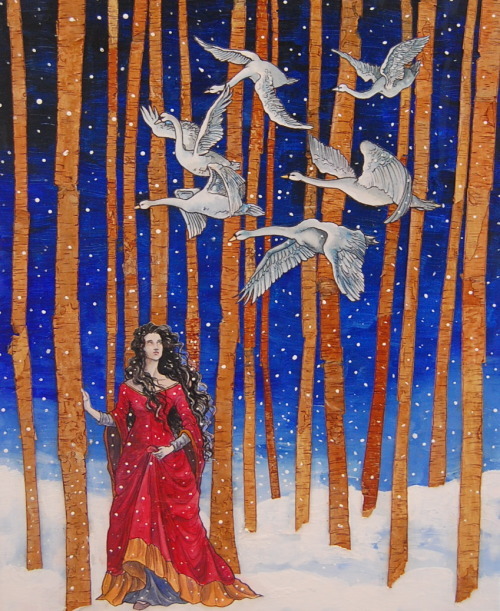
To achieve their goals, she turns the 6 older children of her husband into swans. Sorcha, the only girl, manages to escape, and Lady Oonagh starts to chase her to destroy her before she can break the curse.

I’ve already made Sorcha (Daughter of Forest), and her daughters Niamh and Liadan (Son of the Shadows), and now I’ll make Fainne (Child of Prophecy), Niamh’s daughter. ;)
c. 838
by mara sop

Post link
(The Oseberg ship, Norway, with which two women were buried)
“There are many theories about who these two women were. A queen and her slave? A sorceress and her assistant? A king’s mother and her companion? A queen and her mother, herself a queen? No one knows. One woman was between twenty-five and fifty-five, the other fifty to eighty, depending on how their ages are assessed; the higher the age at death, the less reliable are the estimates. One or both of the Oseberg women may have fought in battle: The younger woman had a broken collarbone that had begun to heal, as well as a fractured skull. The older woman badly injured her knee in her youth and had massive arm muscles; she died of cancer. Which one was Queen Asa? Probably neither. Though Asa has been linked to Oseberg since the ship burial was discovered in 1904 (one translation of “Oseberg” is “Asa’s Mound”), the scientific dating of the burial to 834 does not sync with the dates historians have deduced from Snorri’s sagas. DNA tests, likewise, kill the mother-daughter theory: The younger woman seems to have come from Persia.
The Oseberg grave mound was built to impress. It called for coordinated teams of laborers and the destruction of enormous wealth. The process took months. A deep pit 144 feet long was dug into the heavy blue clay, its bottom below the water table. A dragonship was floated up the narrow river, then portaged over a roadway of logs into the pit—by then a muddy pool—and turned so its high spiral stem faced the fjord, before being moored to a large stone.
(…)
After the beautiful Oseberg ship was moored in the valley floor, beside the narrow Slag-Bank River, a burial chamber of sturdy logs was erected on the ship’s deck behind the mast. Aft of this chamber a complete kitchen was assembled, with iron pots, a frying pan, a dough trough, a quernstone, cups and platters, knives and spoons, and at least one black glass goblet. An ox was butchered and other foods were gathered: Archaeologists have found traces of rye flour, blueberries, apples, plums, and spices, including cumin, horseradish, and mustard.
The chamber itself was furnished as a royal bedroom. Long, narrow tapestries lined the walls, one showing a battle scene, the other a ritual procession. Carved wooden beds with feather pillows and blankets woven of red and white wool filled most of the floor space. There were iron lamps on long poles, a chair, a stool, and a bast-fiber floor mat. A line of chests along the far wall had once held clothing (scraps of wool and silk showed their fine quality). There were shoes and combs, but no jewelry except for seven glass beads.
The archaeologists who opened the grave in 1904 were also surprised to find no weapons, except for two hand axes. Instead there was a plethora of textile tools—looms, spindles, scissors, yarn—and other objects that seem to have had ritual use: a leather pouch of cannabis seeds for invoking a shamanistic trance; musical instruments, including a long wooden horn called a lur, whistles and a small bell, and five sets of rattles made of large, linked iron loops. One rattle was attached with rope to a splendidly carved wooden post topped with a snarling animal head. Four similar animal-head posts were found outside the room.”
The real valkyrie, The hidden history of viking warrior women, Nancy Marie Brown
Post link



